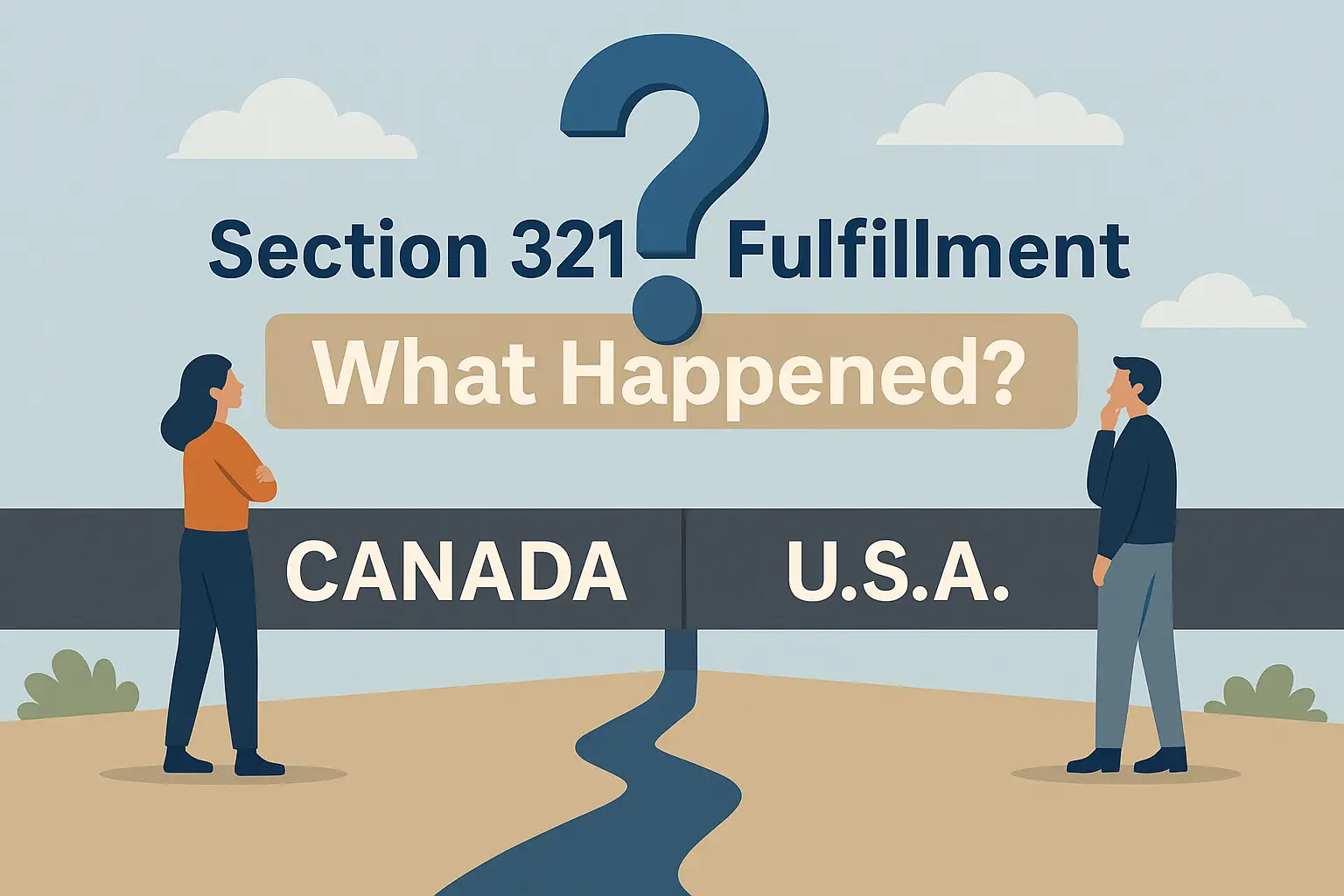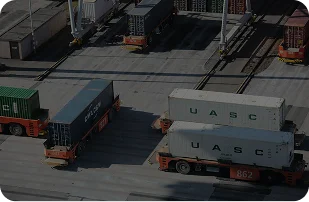The End of Section 321? Why U.S. Fulfillment Just Became the Smarter Option

For years, Section 321 was the secret weapon for eCommerce brands looking to slash costs and streamline international shipments. By allowing goods valued under $800 to enter the U.S. duty-free, it created a loophole that many brands—particularly those importing from China and Canada—used to cut down on tariffs and taxes. Entire fulfillment ecosystems grew around this regulation, especially in Canada and Mexico, offering “nearshore” solutions that let brands import cheaply and re-ship to U.S. customers.
But that’s all about to change.
A regulatory crackdown—initiated during President Biden’s term and finalized by the current administration—has put the final nail in the coffin for Section 321’s wide-scale use. Once a cornerstone of cost-saving strategies for DTC brands, the exemption’s relevance is quickly fading. And as enforcement intensifies, brands that rely on it are now facing new compliance burdens, rising costs, and delivery delays.
In this shifting landscape, fulfilling from within the U.S. has emerged as not just the safer alternative—but the more strategic and scalable one.
What Changed with the Recent Executive Order?
The most recent executive order directs U.S. Customs and Border Protection (CBP) to significantly tighten enforcement on Section 321 shipments. This includes cracking down on foreign eCommerce sellers, reining in widespread misuse of the exemption, and closing critical loopholes that allowed brands to route inventory through Canada or Mexico to avoid duties.
Key changes include:
- Enhanced reporting requirements – Merchants must now provide more detailed data on shipments and supply chain origins.
- Penalties for shipment fragmentation – Splitting bulk orders into multiple under-$800 packages to avoid duties is being aggressively targeted.
- Increased scrutiny of low-value import declarations – Authorities are focusing on chronic under-valuation and repeat offenders.
While the order primarily targets foreign sellers flooding U.S. marketplaces, the ripple effect touches all brands using Section 321. Logistics partners in Mexico and Canada are already tightening policies, and border inspections are increasing—especially at high-volume cross-docking hubs.
The message is clear: Section 321 is no longer a long-term growth strategy. It’s a short-term loophole with a short fuse.
The Hidden Costs of Section 321 Are No Longer Worth It
Section 321 once gave smaller brands a rare advantage. But today, the reality looks much different—and the hidden costs are mounting:
1. No More Duty-Free Assurance
What used to be a guaranteed exemption is now subject to interpretation and enforcement. If CBP suspects you’re fragmenting shipments, under-declaring values, or mislabeling goods, penalties can follow quickly. The result?
- Unexpected customs holds
- Massive shipment delays
- Risk of seizure and fines
For brands promising 2- or 3-day delivery, these delays aren’t just inconvenient—they’re brand-damaging.
2. Operational Complexity and Risk
Running cross-border fulfillment isn’t simple. You’re juggling:
- Import paperwork
- Third-country logistics partners
- Inventory visibility issues
- Returns routing nightmares
Every added step increases risk, especially as fulfillment grows more complex with higher volumes and faster delivery expectations.
3. Rising Logistics Costs
The real kicker? Even with the Section 321 exemption, many brands are still overpaying for shipping.
Cross-border parcels cost more to process, more to clear, and more to return. With new enforcement policies in place, those costs will only rise—without the benefit of duty savings to offset them.
The New Edge: U.S.-Based Fulfillment
With Section 321 no longer delivering the value it once did, brands are rethinking their entire fulfillment playbook. And increasingly, they’re turning to U.S.-based fulfillment to regain control, speed, and scalability.
1. Shorter Transit Times = Happier Customers
When you fulfill from within the U.S., your products move faster—especially to high-volume states like Florida, Texas, and California. Whether you’re shipping from New York, Pennsylvania, or Texas, you’re already in-country and closer to your customers.
Here’s how it stacks up:
| Destination | From Toronto, Canada | From New York, USA |
| New York, NY | 2–3 business days | 1 business day |
| Miami, FL | 4–5 business days | 2–3 business days |
| Dallas, TX | 4–6 business days | 3–4 business days |
| Las Vegas, NV | 5–7 business days | 4–5 business days |
Note: Transit times may vary by carrier, but the advantage of being inside U.S. borders is clear.
2. Lower All-In Logistics Costs
Think you’re saving money with cross-border fulfillment? Think again.
Once you include:
- Duties on imports (which are now unavoidable)
- Higher last-mile parcel rates
- Slower returns processing
- Additional compliance overhead
…it becomes clear that fulfilling from within the U.S. is often more affordable overall, particularly when using a fulfillment provider with negotiated carrier discounts.
3. Simpler Compliance, Fewer Surprises
With U.S.-based fulfillment, you’re not navigating international law, trade restrictions, or ambiguous customs rules. You’re operating under one legal framework with a clear path for scaling—no matter how fast your brand grows.
Why Brands Are Moving to Innovative Warehouse Solutions (IWS)
For brands making the smart shift to U.S.-based fulfillment, Innovative Warehouse Solutions (IWS) is the trusted partner making that transition fast, flexible, and future-proof.
Whether you’re a growing DTC brand or a global company reevaluating your North American strategy, IWS offers:
✅ Fully U.S.-based, Section 321-compliant operations
✅ Deep carrier discounts and faster ground shipping
✅ Coast-to-coast 1–3 day delivery coverage
✅ Advanced tech integrations and real-time visibility
✅ Flexible onboarding for startups and enterprise alike
And the best part? Most brands end up saving money compared to their previous fulfillment setup—while gaining speed, control, and peace of mind.
Conclusion: The Loophole Closed. The Opportunity Opened.
The era of duty-free cross-border fulfillment is ending. Section 321 was never meant to support massive DTC operations—and now, it won’t.
Brands that cling to the old model risk falling behind as enforcement increases and customer expectations continue to rise. But those that act now—moving to U.S.-based fulfillment—will gain a competitive edge in 2025 and beyond.
Innovative Warehouse Solutions is here to help you take that next step with confidence.
Ready to pivot? Learn more at www.invwhs.com or reach out to schedule a free logistics audit today.








































